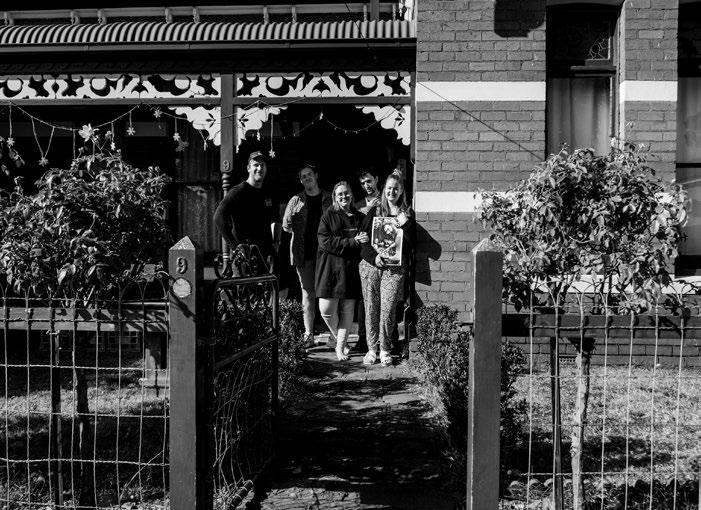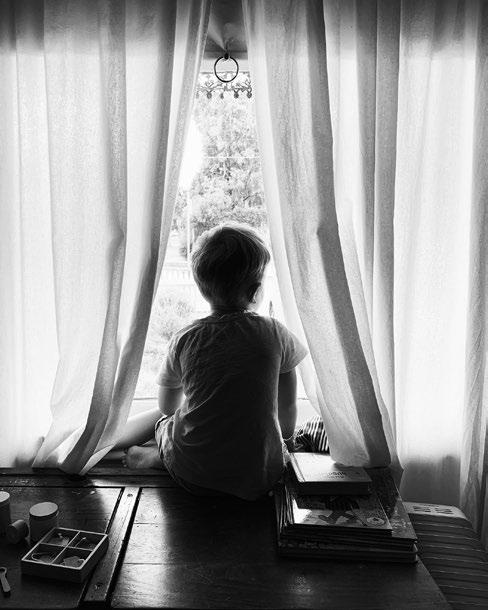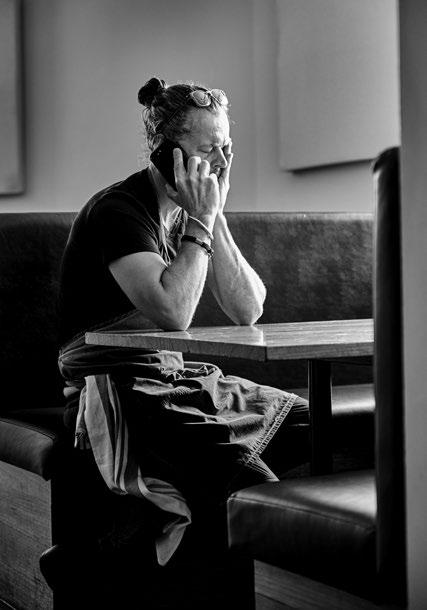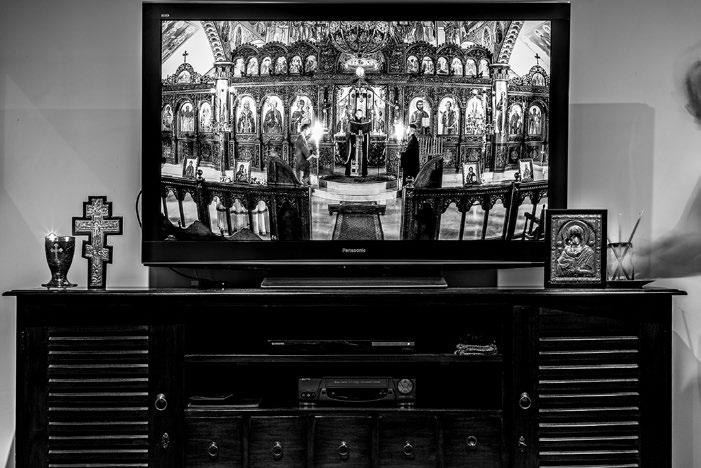
5 minute read
The Photobook Project
Every year for the past 10 years, each Vocational Education (VE) Diploma student has produced their own documentary photographic books focused around telling the story of an individual, club, group or community organisation. The books are produced in black and white and can range from 40 to 80 pages long. While the books feature a photographic narrative, images are supported by a written introduction and captions to convey their story. Photography students work closely with VE’s outstanding Professional Writing and Editing students to create and perfect their narrative. Photographers and editors are matched to deliver these intimate and compelling stories. ‘Maintaining the collaborative experiences for the photography and professional writing and editing students was a great achievement for all involved. The books created, via remote collaboration, by the 2020 students will form part of a cherished historic record of this time, not only for now but to look back on for many years to come.’
J E S S I E D I B L A S I P R O G R A M M A N A G E R P H O T O G R A P H Y + P H O T O I M A G I N G
Advertisement
© Martin Reftel © Mandy Wood


This year, student projects proceeded as planned until the sixth week of the semester, when the first of Melbourne’s COVID-19 lockdowns occurred and created unprecedented obstacles for students in covering their chosen stories. At that point, Photography teacher Martin Reftel, Professional Writing and Editing teacher Melissa Cranenburgh, and I decided to change the documentary brief, and tasked students with telling their individual stories of lockdown. A few students were able to continue or adapted their original stories in some form, while the majority began documenting their various home lives with the families, partners, or housemates that surrounded them. To further assist the students as they adapted to working remotely, the teaching staff joined in and began documenting their own lockdown life. The challenges imposed upon us all have required staff and students to be resilient, innovative and have resulted in intimate insights into the lives of people coping with the difficulties of Melbourne’s COVID-19 lockdown life.
R O B E R T G A L E D I P L O M A P H O T O G R A P H Y + P H O T O I M A G I N G T E A C H E R
The Photobook Project
Knowing that we were tackling this project under such strange circumstances together made the whole process that much more approachable. I found that the way I’d worked as an editor with writers (and Microsoft Word aficionados, for that matter) in the past was different to how I ended up working with a photographer. Not only did I have to put into practice everything I knew in terms of grammar, punctuation, style, and narrative, but I also had to navigate giving feedback to someone who didn’t work in the way that I did. As familiar as I was with track changes, Word or Acrobat, I had to be mindful not just of the content of my feedback, but actually how that feedback was delivered. As it turned out, navigating these hurdles was part of what made this collaboration so intoxicating. Accepting that I’d need to change my usual approach to editing to fit this collaboration, and then to have that approach run smoothly and successfully, gave me confidence as an editor. This project taught me that one of the keys to a successful collaboration is to let go of some expectations – to be flexible and empathetic in my approach with an author, academic or photographer.
W I L L M A C FA R L A N E P R O F E S S I O N A L W R I T I N G A N D E D I T I N G S T U D E N T

© Alex Salem

For university this semester, I embarked upon a collaboration with a photographer that I had never met in person — akin to a blind-date, lined up by a university matchmaker. I was nervous, for in the lead-up to our initial communication, this strange dimension seemed to add to the disconnect of the broader lockdown and social-distancing procedures in place at the time. But once we finished our initial chat (delightfully friendly), I wondered: how do we communicate —let alone collaborate—when we are formless and soundless? In one sense, many participants are active within a space, adhering to the agreedupon social etiquette of that situation. But if the group dynamic of that digital space were transplanted to a physical domain, the implications of invisible, all-seeing and all-hearing participants takes on a sinister atmosphere — one reserved for the one-way-mirrored interrogation room, or the transgressive voyeur. These concerns were on my mind with that recent collaborative project. When we made our initial digital exchanges, presenting a digitally-appropriate version of myself was at the forefront of my mind. I wanted to be as clear, punctual, and polite as possible, quietly stressing my desire for honest, open exchange to alleviate the potential for miscommunication. I think the version of me that this individual worked with is a far more approachable, efficient, and confident person than I imagine myself to be within the physical world. Perhaps one need not write-off digital collaboration for its limitations as a means of communication. A better approach may be to understand and reconcile its uniqueness, and its possibilities.
N I C O C A L L A G H A N P R O F E S S I O N A L W R I T I N G A N D E D I T I N G S T U D E N T








